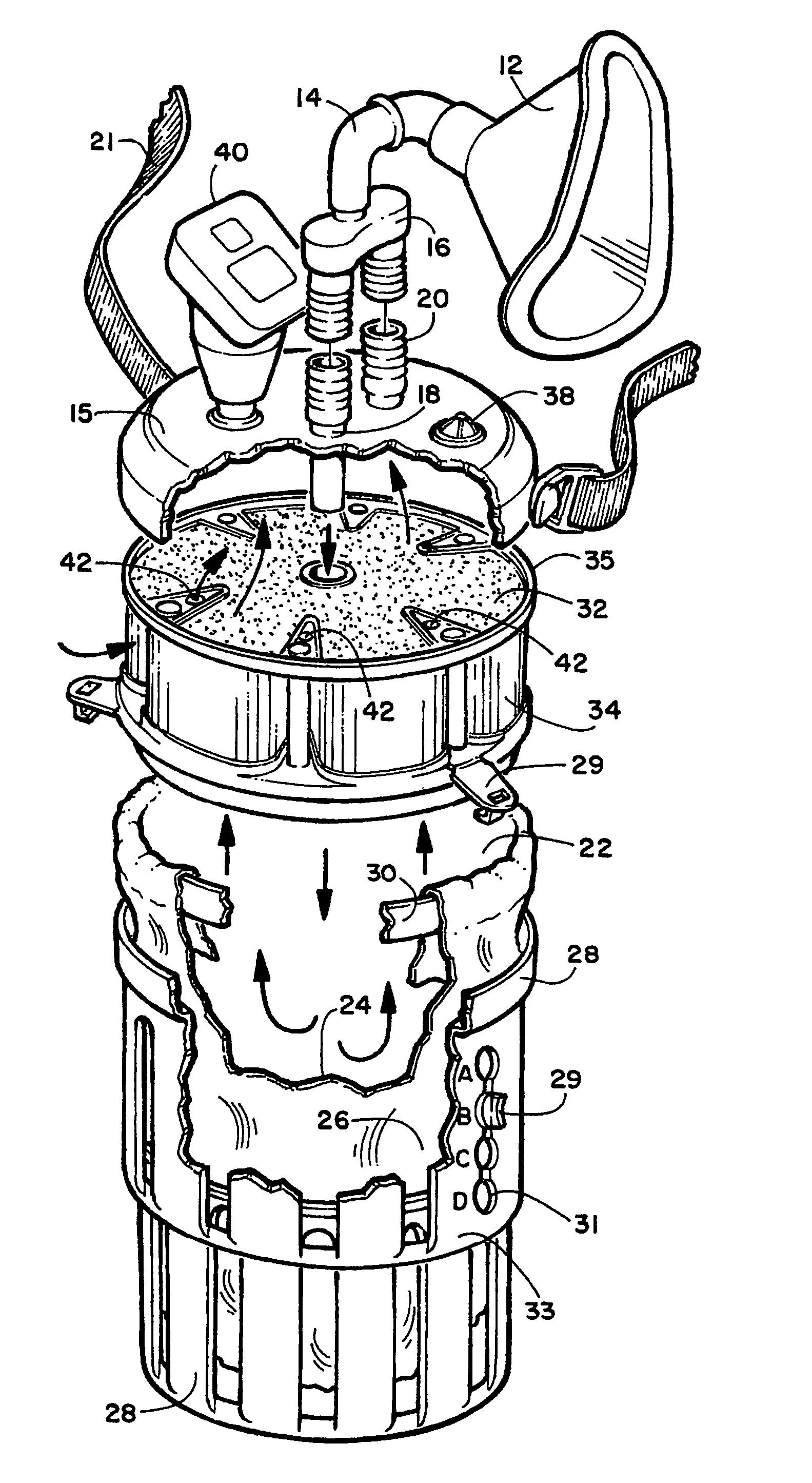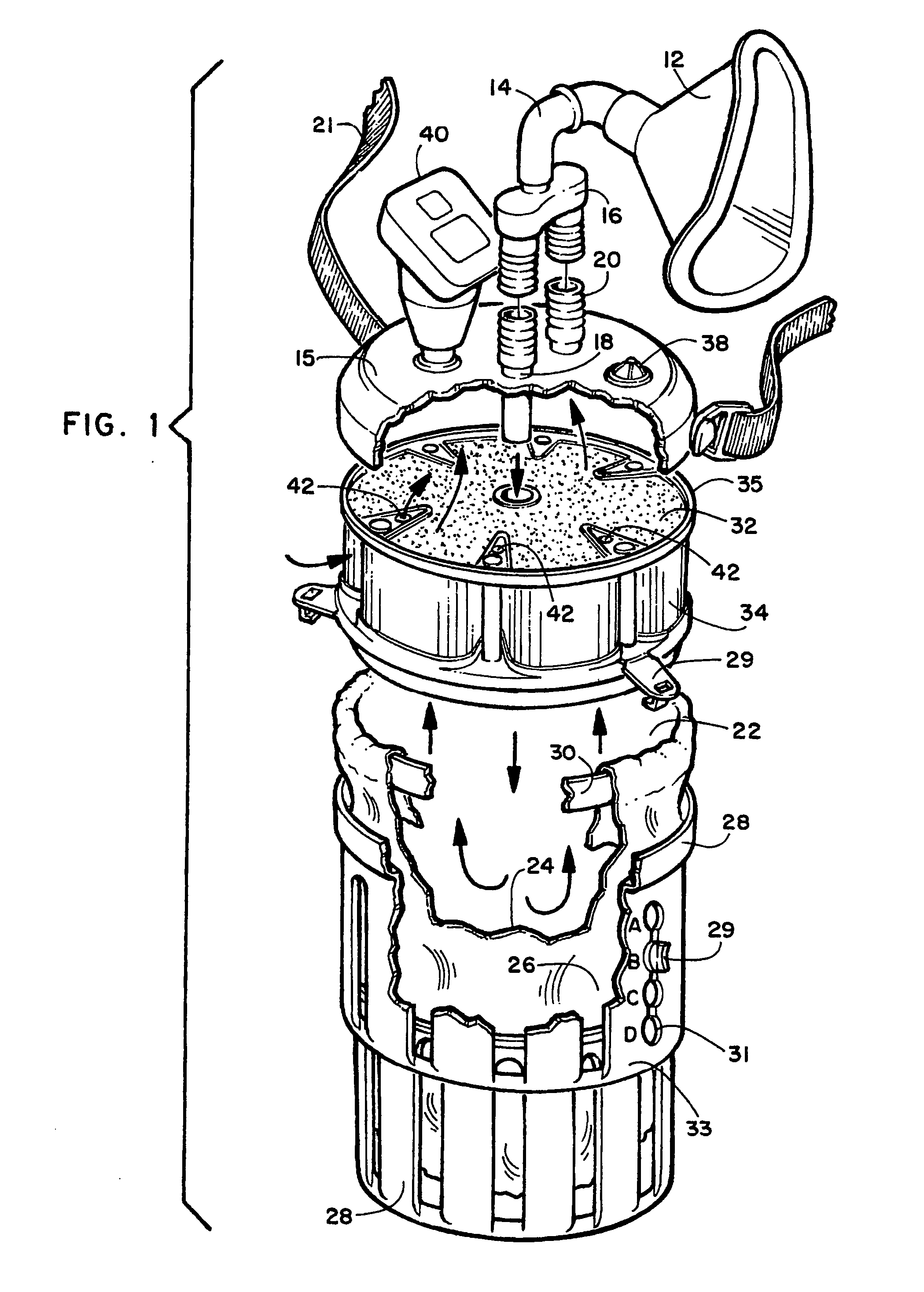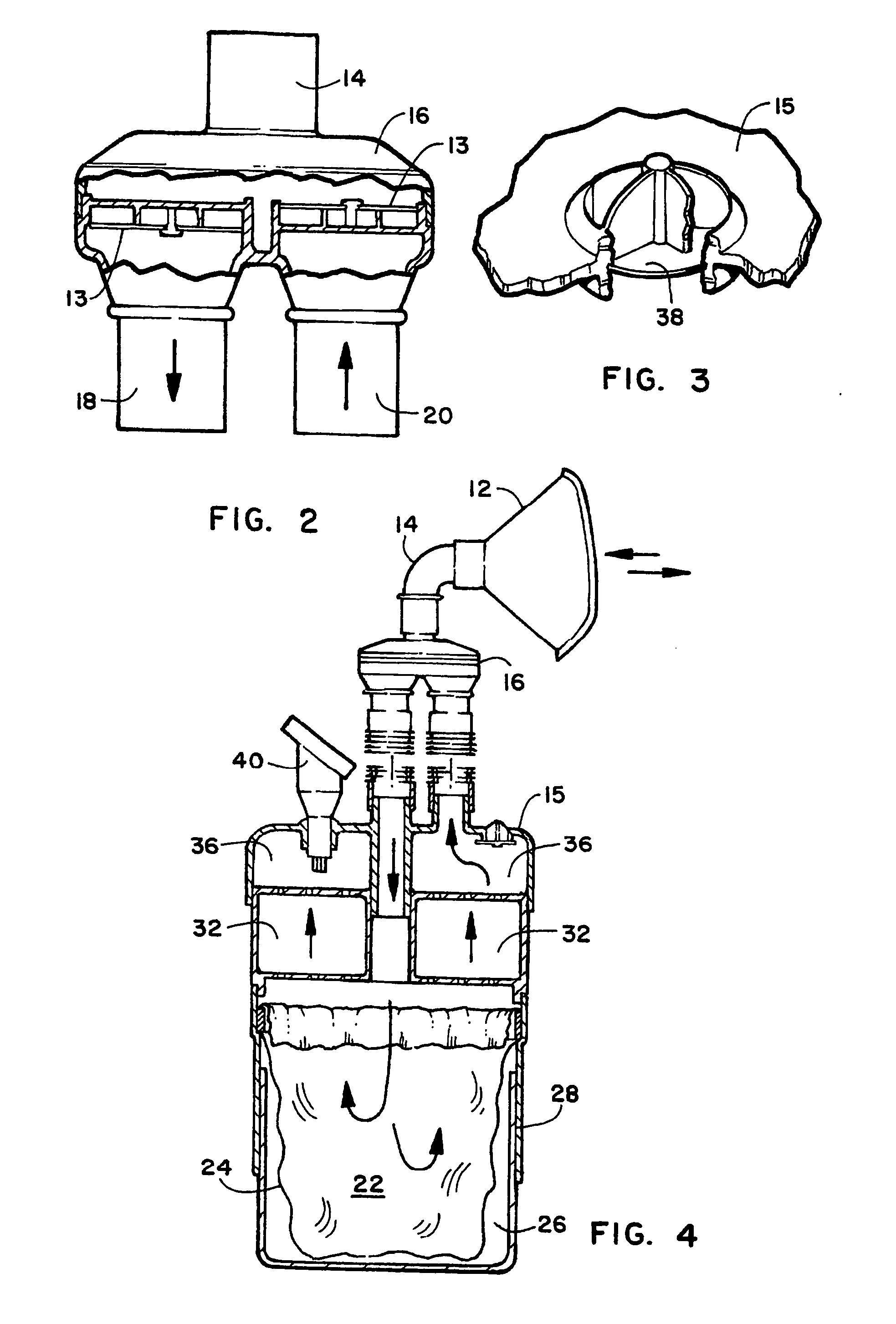Breathing apparatus for hypoxic pre-acclimatization and training
a technology of hypoxic pre-acclimatization and breathing apparatus, which is applied in the direction of respirator, life-saving device, respiratory mask, etc., can solve the problems of increasing the body's antioxidant enzymatic capacity, reducing the free radical formation of the body, and inability to design the currently available rebreathers, etc., to achieve easy transportation, reduce the heating of the air and moisture absorption, and the effect of small siz
- Summary
- Abstract
- Description
- Claims
- Application Information
AI Technical Summary
Benefits of technology
Problems solved by technology
Method used
Image
Examples
Embodiment Construction
[0020] Referring to FIGS. 1-4 the disclosed hypoxicator device 10 is of small stature and easily hand held by a user. It features a means for sealed communication with the respiratory system of the user which is shown in a current preferred mode as a full-face mask 12 adapted to engage over the nose and mouth of a user at an open end and in sealed communication with a conduit 14 which in turn is in sealed engagement with a fitting 16. The fitting 16 provides a mount for, allows communication through a pair of one way valves 13 with an intake conduit 18 and an exhaust conduit 20 both of which are in sealed engagement with the device 10. The fitting 16 and one way valves 13 thus form a non-rebreathing valve using the one way valves 13 insure a one way passage of air through the conduits during inhalation and exhaling by the user into the face mask 12.
[0021] In use, air expired by the user into the face mask 12 is communicated through the intake conduit 18 and through the top wall 15 ...
PUM
 Login to View More
Login to View More Abstract
Description
Claims
Application Information
 Login to View More
Login to View More - R&D
- Intellectual Property
- Life Sciences
- Materials
- Tech Scout
- Unparalleled Data Quality
- Higher Quality Content
- 60% Fewer Hallucinations
Browse by: Latest US Patents, China's latest patents, Technical Efficacy Thesaurus, Application Domain, Technology Topic, Popular Technical Reports.
© 2025 PatSnap. All rights reserved.Legal|Privacy policy|Modern Slavery Act Transparency Statement|Sitemap|About US| Contact US: help@patsnap.com



